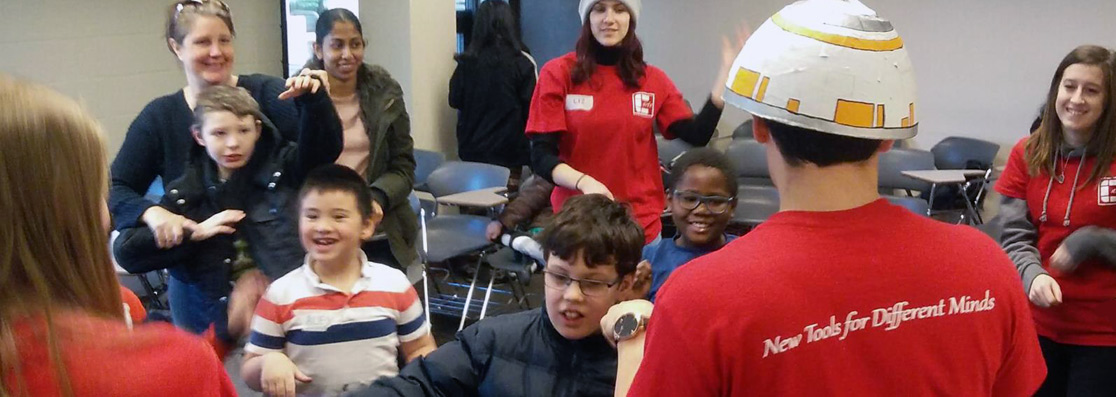
Students participate in the CARTE Academy, half-day camps for children on the autism spectrum
Science for Students
TDLC investigators believe that part of the current crisis in education is the lack of scientific understanding of how the brain learns, and the lack of translation of this scientific understanding to the classroom. Gaining a better understanding of how we learn could lead to improved educational practices and technologies that would give children a better chance of success in school, and ultimately in life. The Center's researchers have made it their mission to ensure that their work will be relevant to the real world of the classroom. TDLC works with teachers in the Center’s Educator’s Network and Distinguished Educators Advisory Panel, composed of star teachers and administrators from around San Diego County. These groups, led by Preuss School’s founding principal Doris Alvarez, meet regularly with Center scientists, and are planning a book to describe the teaching practices they have found to be effective. There are also plans to expand the Educator’s network to the partner institutions.
TDLC's projects, while revolving around the unifying theme of time, are diverse and cutting-edge. Researchers delve into topics that include: What are the best interventions for children struggling with English language and reading skills? How does our brain change as we become experts, and can we train kids with autism to become “face experts” to improve their social skills? Can robots be endowed with the ability to “read” a student’s facial expressions, to improve intelligent tutoring systems? What are the principles underlying the dynamics of active vision? How does musical training affect brain development, and can music interventions improve language and cognitive development? Answers to these questions and more could have far-reaching consequences. They could potentially transform education, giving children a better chance of success in school, and, ultimately, in life.
TDLC has a large science portfolio. Below is a sampling of projects that involve personal learning:
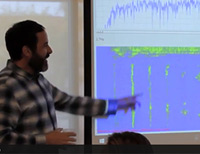
![]() Listening to Waves Program: Listening to Waves is an educational program that seeks to engage youth in STEM by teaching them the science of waves through the creation of electronic sounds and musical instruments. The program, developed by Dr. Victor Minces and Dr. Alexander Khalil through their work at TDLC investigating the role of music in education, is now supported by the EHR division of the National Science Foundation. Since its inception, Listening to Waves has served more than 1500 students (largely from low SES populations) across San Diego County, including students in the High Tech High School System, the Boys and Girls Club of San Diego, the Museum School, and the Sweetwater School District. More
Listening to Waves Program: Listening to Waves is an educational program that seeks to engage youth in STEM by teaching them the science of waves through the creation of electronic sounds and musical instruments. The program, developed by Dr. Victor Minces and Dr. Alexander Khalil through their work at TDLC investigating the role of music in education, is now supported by the EHR division of the National Science Foundation. Since its inception, Listening to Waves has served more than 1500 students (largely from low SES populations) across San Diego County, including students in the High Tech High School System, the Boys and Girls Club of San Diego, the Museum School, and the Sweetwater School District. More ![]()
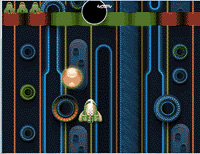
![]() Therapeutic Games for Improving Low-Level Attention
Therapeutic Games for Improving Low-Level Attention
The ability to orient and focus one’s attention appropriately is an important ingredient for effective learning. Dr. Jeanne Townsend and Dr. Leanne Chukoskie saw the need to take research findings about attention and to translate them into effective, affordable and readily available interventions. Through their new company, BrainLeap Technologies, they have created interventions in the form of fun games, aimed at improving attention. These games, using eye movements, gradually shape behavior using visual and auditory feedback provided in real time. They are designed to improve the speed, accuracy and control of eye movement, and in doing so they improve the speed, accuracy and control of attention. Townsend and Chukoskie are currently working to take these games from the lab and into homes and schools, to improve attentional skill and increase classroom readiness.
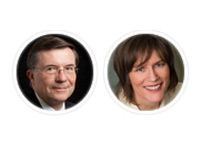
![]() Massive Open Online Courses (MOOCs): Learning How to Learn and Mindshift
Massive Open Online Courses (MOOCs): Learning How to Learn and Mindshift
Dr. Terrence Sejnowski and Dr. Barbara Oakley have created several MOOCs that provide important mental tools and practical insights from science so that participants can learn how to learn and change effectively. More ![]() In addition, Sejnowski and Oakley wrote a book for kids and teens called, "Learning How to Learn: How to Succeed in School Without Spending All Your Time Studying; A Guide for Kids and Teens." The book, described as "a surprisingly simple way for students to master any subject," is based on the Learning How to Learn MOOC and the bestselling book, A Mind for Numbers.
In addition, Sejnowski and Oakley wrote a book for kids and teens called, "Learning How to Learn: How to Succeed in School Without Spending All Your Time Studying; A Guide for Kids and Teens." The book, described as "a surprisingly simple way for students to master any subject," is based on the Learning How to Learn MOOC and the bestselling book, A Mind for Numbers.
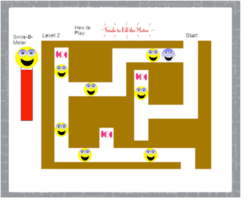
![]() Let's Face It! Program and FaceMaze
Let's Face It! Program and FaceMaze
Dr. Jim Tanaka and his team at the University of Victoria, British Columbia, developed the Let's Face It! Program (LFI!) to train autistic children torecognize facial expressions. The team is investigating whether training autistic children to become “face experts” will improve their social skills. The program has been shown to be successful in controlled studies. In addition, Dr. Tanaka and his team have created a game called FaceMaze to help train facial expressions in individuals with Autism Spectrum Disorder (ASD). children. FaceMaze helps participants learn to produce accurate facial expressions and remediate expression skills. Let's Face It! Website![]()
![]()
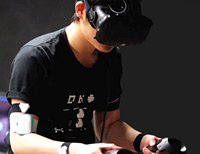 Real-World Neuroimaging
Real-World Neuroimaging
Dr. Tzyy-Ping Jung and his team develop and validate non-invasive, mobile and multi-modal brain/body imaging, along with advanced computational approaches, to perform real-world neuroimaging and brain-computer interfaces (BCI). Some of their projects include: Problem solving, decision-making, and visual search in a VR Escape Room; BCI for drowsiness/inattention detection; User interface using brainwaves; and High-speed spelling with noninvasive BCI. Learn more about Dr. Tzyy Ping here.
![]() Learning Technologies: RUBI (Robot Using Bayesian Inference)
Learning Technologies: RUBI (Robot Using Bayesian Inference)
RUBI (Robot Using Bayesian Inference), "the brain child" of former TDLC investigator Javier Movellan, has joined the lab of Andrea Chiba! RUBI continues to visit UC San Diego’s Early Childhood Education Center with TDLC's Deborah Forster to help to teach the preschoolers letters, numbers and fun songs. RUBI also helps the Chiba lab learn more about human-robot interaction and how robots can be useful. Current science with RUBI includes teaching children valuable socio-emotional skills.
![]() The Gamelan Project
The Gamelan Project
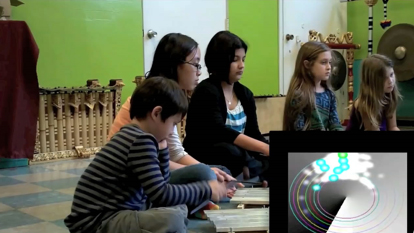 Dr. Victor Minces and Dr. Alexander Khalil explore the role of Balinese music--a style of music that emphasizes synchrony--on cognitive development, in particular, the ability to maintain an attention span. Their research suggests that the ability of a child to synchronize with an external source in a group setting correlates significantly with established measures of attentional performance.
Dr. Victor Minces and Dr. Alexander Khalil explore the role of Balinese music--a style of music that emphasizes synchrony--on cognitive development, in particular, the ability to maintain an attention span. Their research suggests that the ability of a child to synchronize with an external source in a group setting correlates significantly with established measures of attentional performance.
![]() TDLC: Music and the Brain
TDLC: Music and the Brain
There is growing interest among TDLC scientists in the effects of music on the brain. Music is intrinsically temporal – it integrates sensory, motor and affective systems in the brain. Because of its temporal nature, it is an ideal focus for TDLC research, as well as a way to integrate across TDLC networks and initiatives. More ![]()
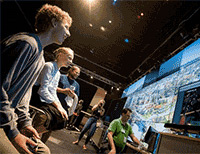
![]() UC San Diego Internship Program: A new internship program at UC San Diego taps into the talents of autistic youth to develop therapeutic video games.The video games, which use eye movement to train attention, are based on research performed through the Temporal Dynamics of Learning Center. Dr. Leanne Chukoskie, a neuroscientist at UC San Diego, came up with the idea of offering a paid summer internship program for people with Autism Spectrum Disorder (ASD). With support from the San Diego Foundation and the Legler Benbough Foundation, she established the program through the Power of Neurogaming Center (PoNG) at UC San Diego’s Qualcomm Institute. The eight-week program is mutually beneficial - Dr. Chukoskie gains the students’ coding talent, and interns improve their social skills by working in creative groups and making professional connections. Read more about this exciting project!
UC San Diego Internship Program: A new internship program at UC San Diego taps into the talents of autistic youth to develop therapeutic video games.The video games, which use eye movement to train attention, are based on research performed through the Temporal Dynamics of Learning Center. Dr. Leanne Chukoskie, a neuroscientist at UC San Diego, came up with the idea of offering a paid summer internship program for people with Autism Spectrum Disorder (ASD). With support from the San Diego Foundation and the Legler Benbough Foundation, she established the program through the Power of Neurogaming Center (PoNG) at UC San Diego’s Qualcomm Institute. The eight-week program is mutually beneficial - Dr. Chukoskie gains the students’ coding talent, and interns improve their social skills by working in creative groups and making professional connections. Read more about this exciting project!![]()
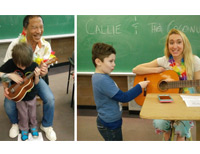
![]() Face Camps and CARTE Academy
Face Camps and CARTE Academy
Researchers at the University of Victoria have developed an innovative model in STEM education blending scientific research with scientific outreach. At their annual summer Face Camp, children are introduced to the psychology and neuroscience of face recognition. Conducted at the University of Victoria in British Columbia, and organized by TDLC's Dr. Jim Tanaka, Face Camp is a free, one day workshop where typically developing and special needs children learn about the "science, art, and fun" of human face recognition. More about Face Camps![]() In addition, the Centre for Autism Research, Technology, and Education (CARTE) at the University of Victoria launched a new (FREE) monthly series of half-day camps for children on the autism spectrum.
In addition, the Centre for Autism Research, Technology, and Education (CARTE) at the University of Victoria launched a new (FREE) monthly series of half-day camps for children on the autism spectrum.
![]() Brain Computer Interfaces (BCIs)
Brain Computer Interfaces (BCIs)
Dr. Virginia deSa's lab at UC San Diego studies the neural basis of human perception and learning. The BCI Division of her lab investigates ways in which BCIs can assist people with injuries or diseases affecting their ability to move and communicate. The lab also uses BCI technology in education, providing stem cell education in the classroom by incorporating their neuro headsets. Click here to learn more about Dr. deSa, and here to read more about her lab.
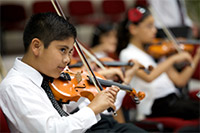
![]() Studying the Influence Music Practice Has On Neurodevelopment in Youth (SIMPHONY)
Studying the Influence Music Practice Has On Neurodevelopment in Youth (SIMPHONY)
How does musical training influence the child's brain and the development of skills like language and attention? Dr. John Iversen wants to find answers. He is heading the SIMPHONY project, which involves the partnership of The Neurosciences Institute, UC San Diego, and the San Diego Youth Symphony. The team is recruiting children between 5 to 8 years of age who receive or plan to receive instrumental/vocal music instruction to participate in the SIMPHONY study.